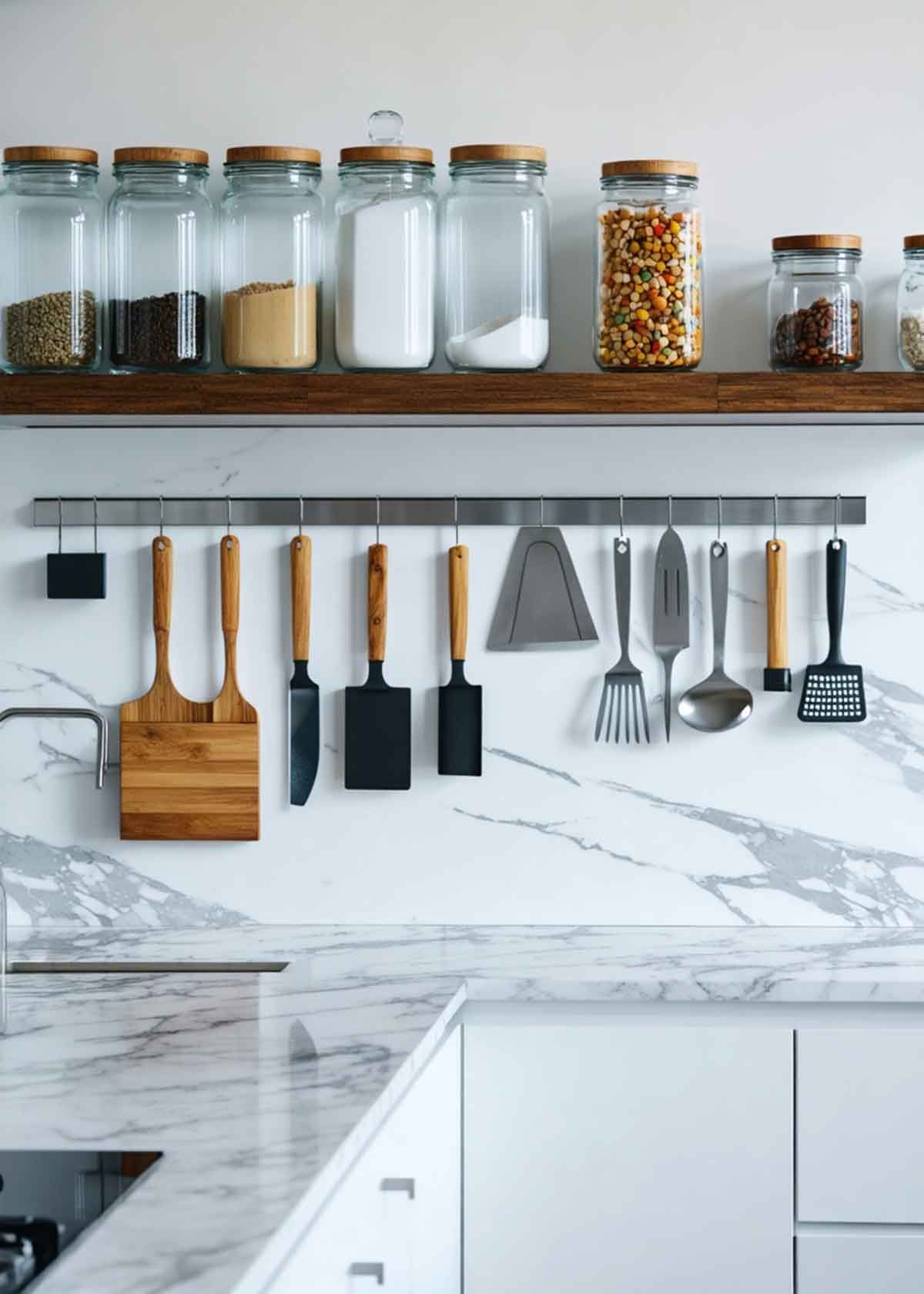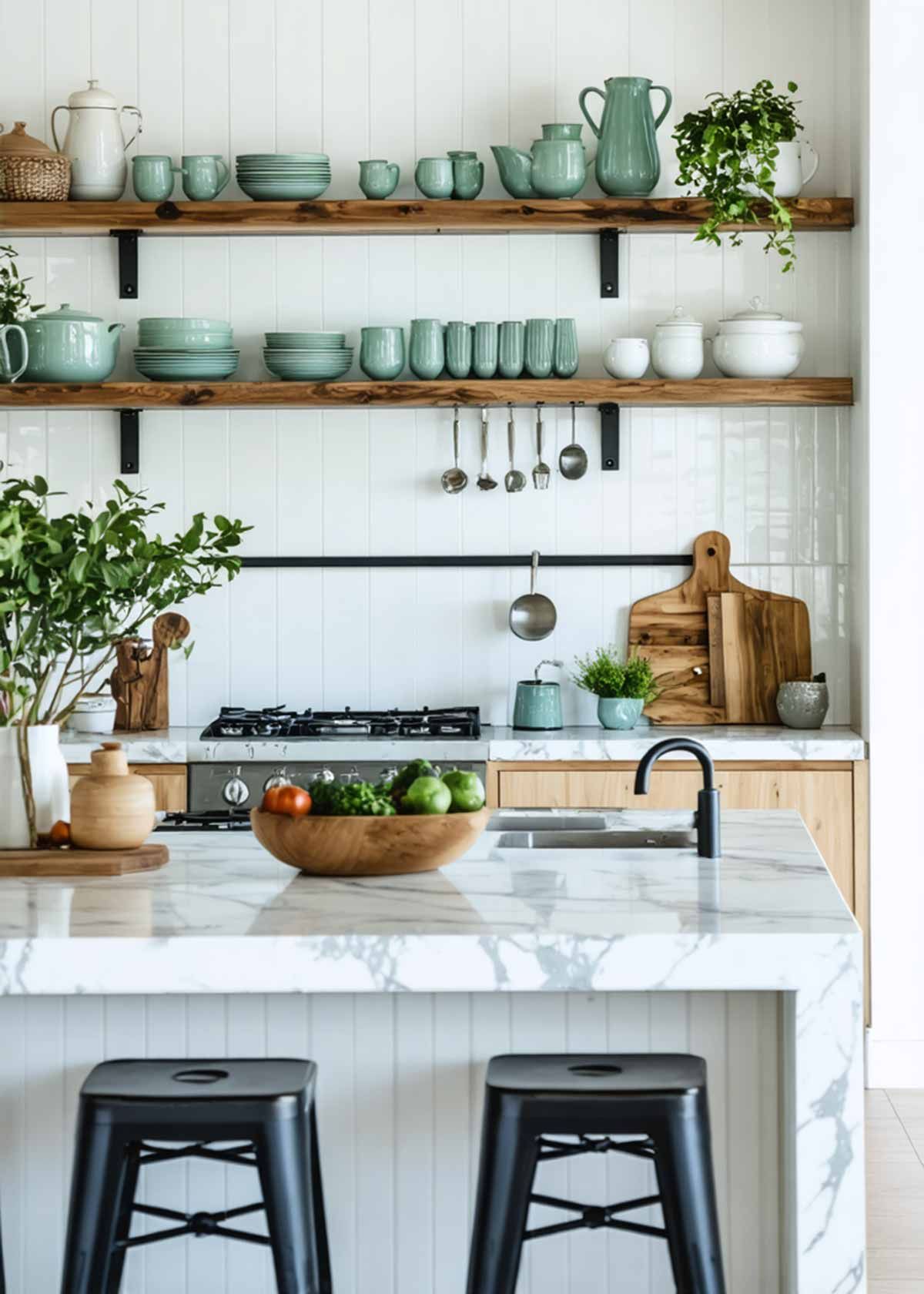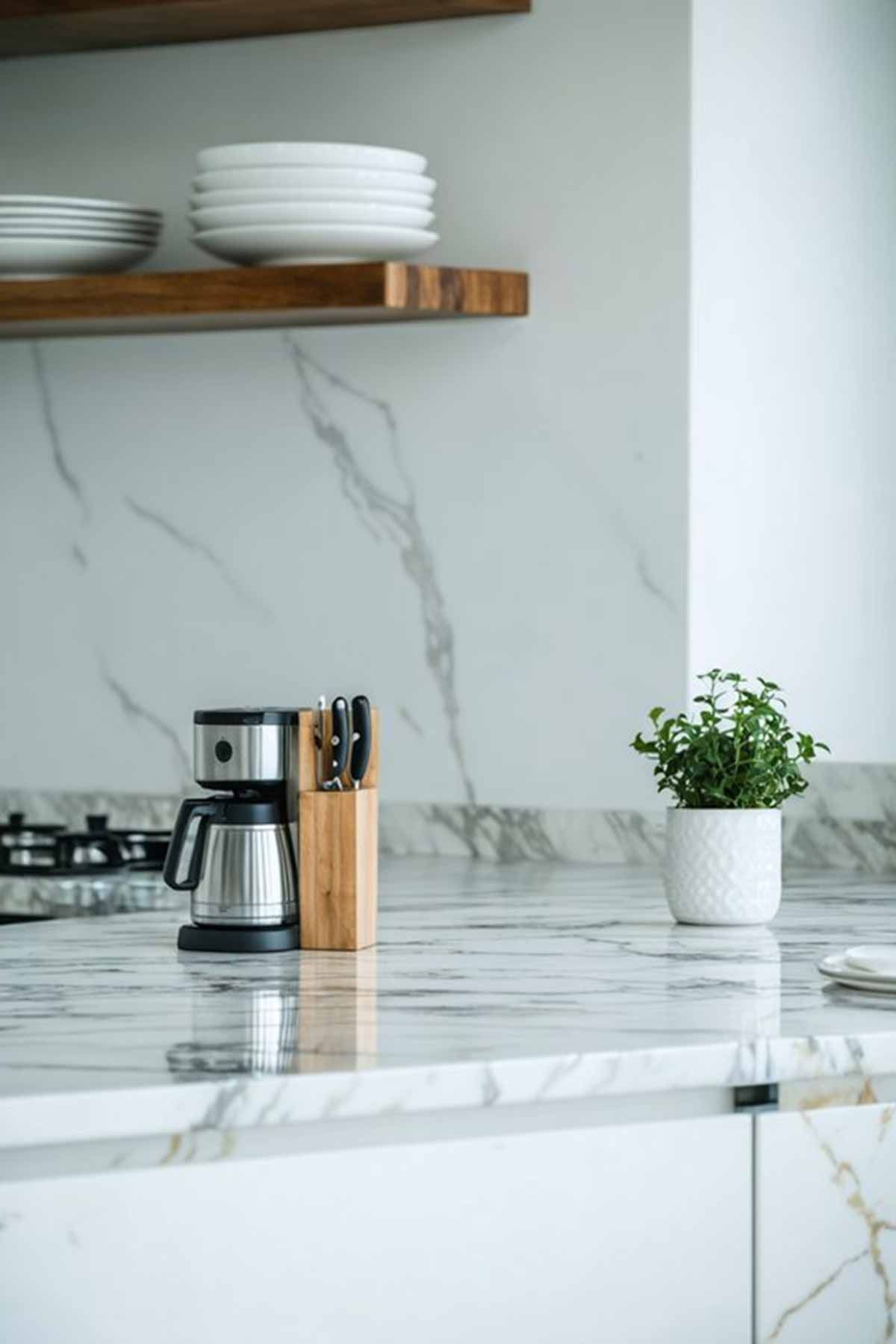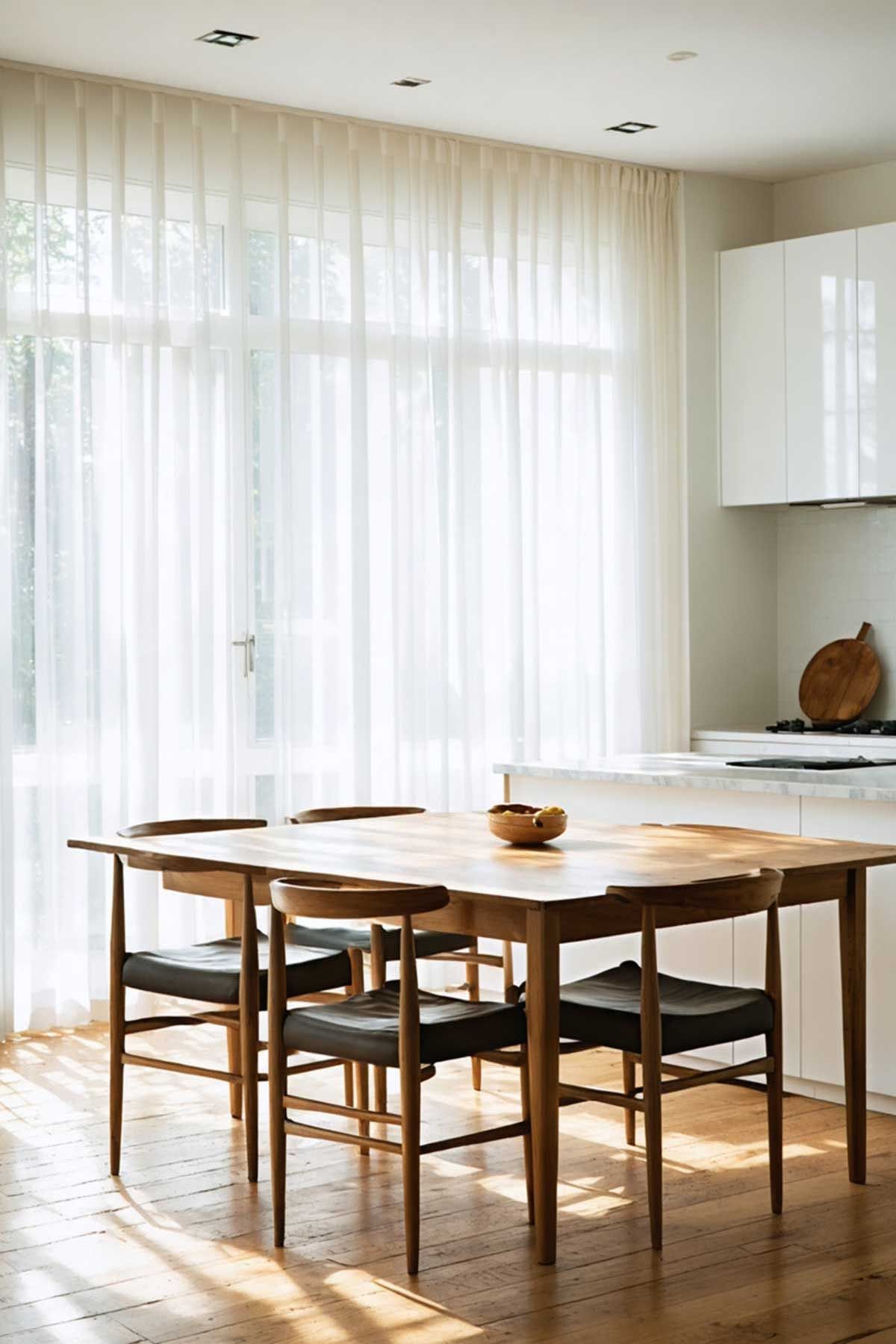Declutter Your Kitchen Benches For Good
REMOVE CLUTTER FROM YOUR KITCHEN BENCHES
You're probably familiar with the daily battle against kitchen counter clutter. No matter how many times you clear the space, it seems to attract everything from unopened mail to rarely-used appliances within days. If you've been struggling to maintain tidy benches, you're not alone - but there's a better way to approach this common challenge. Let's explore proven strategies that'll help you reclaim your counter space once and for all.
Why Kitchen Benches Get Cluttered
While the kitchen is meant to be a functional workspace, it often becomes a catchall area for everything from mail and keys to shopping bags and electronics.
You're likely guilty of dropping items on the bench as you walk in the door, promising yourself you'll put them away later.
Kitchen benches get cluttered because they're usually the first flat surface you encounter when entering your home. Without designated spots for everyday items, these spaces become default dumping grounds.
You might also keep appliances you rarely use on the bench, taking up valuable prep space. The "I'll deal with it later" mindset leads to accumulation, and before you know it, your kitchen bench has transformed from a workspace into a storage area that's difficult to reclaim.
Assess Your Current Kitchen Counter Situation
To break free from the cycle of kitchen clutter, you'll need to take an honest look at your counter space. Start by scanning your kitchen counters and identifying what's currently taking up valuable real estate. You'll likely spot items that don't belong or haven't been used in weeks.
| Item Type | Action Needed |
|---|---|
| Daily Use | Keep accessible but organized |
| Rarely Used | Store in cabinets or donate |
| Decorative | Evaluate if worth counter space |
| Non-Kitchen | Remove to proper location |
Take photos of your counters from different angles as this helps you see the space objectively. Notice patterns of where clutter accumulates and identify problem zones. Consider which items truly deserve prime counter position based on how frequently you use them. This assessment will guide your decluttering strategy.

Essential Vs Non-Essential Items
Before you can effectively declutter your kitchen counters, you'll need to distinguish between items that deserve prime real estate and those that don't.
Start by identifying your daily essentials: the coffee maker if you brew every morning, a knife block if you cook frequently, and perhaps a fruit bowl for easy access to healthy snacks.
Non-essential items typically include appliances you rarely use, decorative pieces that gather dust, and gadgets that seemed useful when you bought them but haven't proven their worth.
That pasta maker you've used twice? Store it away. The bread machine that's been sitting idle? Consider whether it's earning its counter space.
Create Designated Zones for Kitchen Items
Once you've sorted your must-have items from the less frequently used ones, organizing your kitchen into strategic zones will maximize your efficiency. Think about how you move through your kitchen and create dedicated areas that support your daily routines.
| Zone Type | What Goes Here |
|---|---|
| Prep Zone | Cutting boards, knives, mixing bowls |
| Cooking Zone | Spices, oils, utensils, pots |
| Coffee Station | Coffee maker, mugs, filters, beans |
| Cleaning Zone | Dish soap, sponges, paper towels |
Position your zones based on logical workflow - keep the prep zone near the sink for easy vegetable washing, and place cooking essentials close to the stove. Store cleaning supplies away from food areas but within easy reach of the sink. Your coffee station should be accessible without disrupting other kitchen activities.
Smart Storage Solutions for Appliances
While kitchen appliances make cooking tasks easier, they often monopolize valuable counter space when not properly stored. To maximize your kitchen's functionality, consider installing an appliance garage to house frequently used items like toasters and coffee makers. These built-in spaces keep appliances accessible yet hidden when not in use.
You can also utilize deep drawers or cabinet shelves with pull-out features to store heavier appliances like stand mixers and food processors.
Install adjustable shelving in your pantry or cabinets to accommodate appliances of different heights. For items you use less frequently, designate upper cabinet space or even basement storage.
Remember to position your most-used appliances in easily accessible spots, while keeping occasional-use items in secondary storage locations.
Managing Paper Clutter in the Kitchen
Kitchen counters often become a landing zone for mail, bills, receipts, and school papers, turning your newly organized appliance space into a paper wasteland.
To combat this, you'll need a dedicated paper management system that keeps documents off your counters. Create a command centre using wall-mounted organizers or a small desk area in your kitchen, where you can sort and process papers immediately.
- Set up labelled folders for different paper categories (bills, school notes, coupons)
- Install a wall-mounted mail sorter near your kitchen entrance
- Keep a recycling bin nearby for junk mail
- Use a scanner app to digitize important documents
- Schedule weekly paper sorting sessions to prevent build-up
Daily Habits to Maintain Clear Counters
Maintaining clear countertops requires more than just occasional cleaning sprees - it demands consistent daily habits that prevent clutter from accumulating in the first place. Start by implementing a "clean as you go" approach while cooking, returning items to their designated spots immediately after use. Set a 10-minute timer each evening to reset your kitchen to its clutter-free state.
| Time of Day | Action | Impact |
|---|---|---|
| Morning | Wipe surfaces after breakfast | Fresh start to your day |
| After Meals | Put away ingredients instantly | Prevents buildup of items |
| Before Bed | Quick counter reset | Wake up to an inviting kitchen |
Remember to sort mail and papers right away, store appliances you don't use daily, and make it a rule that nothing "lives" on the counter unless it's used multiple times per day.

Maximizing Vertical Storage Space
As countertop space becomes increasingly precious, your walls and ceiling areas offer untapped potential for smart storage solutions.
Install floating shelves to store spices, preserves, and decorative items while keeping them easily accessible. Mount a pegboard to hang commonly used utensils, or invest in a ceiling-mounted pot rack to free up valuable cabinet space.
Consider these vertical storage options to maximize your kitchen space:
- Install magnetic knife strips at eye level for safe, space-saving blade storage
- Add under-cabinet hooks for mugs, measuring cups, and small tools
- Mount a rod system with S-hooks for hanging cooking utensils
- Use door-mounted organizers for pantry items and cleaning supplies
- Set up an over-the-sink drying rack to eliminate counter clutter
Organizing Kitchen Tools and Gadgets
Organizing your tools and gadgets effectively can transform your kitchen from chaotic to efficient. Start by evaluating each item's necessity - if you haven't used it in the past month, it's time to reconsider its place in your kitchen.
Create dedicated zones for different activities, keeping frequently used tools within easy reach of their respective work areas.
Install magnetic strips for knives, utilize drawer dividers for utensils, and consider hanging frequently used tools on hooks or pegboards.
Don't let rarely used appliances occupy valuable counter space - store them in cabinets or consider donating them.
Remember the one-in, one-out rule when acquiring new kitchen tools. For items you keep, make sure they've a designated home and return them there immediately after use.
Long-Term Strategies for Clutter Prevention
Successful clutter prevention requires more than just occasional tidying - it demands well-planned, sustainable habits that you'll stick to over time.
To maintain a clutter-free kitchen long-term, implement the "one in, one out" rule and create designated zones for specific activities. Make daily 10-minute decluttering sessions part of your routine rather than waiting for chaos to build up.
Key habits for lasting clutter prevention:
- Set up a command centre for mail and papers away from countertops
- Store appliances in cabinets when not in regular use
- Wipe surfaces clean immediately after meal prep
- Return items to their designated spots after each use
- Schedule weekly evaluations to reassess your organization system
Remember to utilize vertical space and maintain clear zones for different kitchen activities to keep countertops functional and clutter-free.
Just remember that clutter free doesn't have to mean stark!
You can still create a warm inviting family kitchen that isn't overrun by clutter but does keep its personality.

Frequently Asked Questions
How Do I Prevent Family Members From Leaving Their Items on Kitchen Counters?
Create designated spots outside the kitchen for everyone's belongings, establish clear family rules, and make it easy to follow by setting up organizing stations where they naturally drop items.
What's the Best Way to Organize Cleaning Supplies Without Cluttering the Counter?
Install under-sink organizers for cleaning supplies, use hanging racks inside cabinet doors, and create a small cleaning zone with daily essentials. You'll keep counters clear and supplies accessible.
How Often Should I Rotate Seasonal Kitchen Appliances and Decorative Items?
You'll want to rotate seasonal appliances every 3-4 months, aligning with holidays and weather changes. Store unused items in labelled boxes and keep only what you're actively using on display.
Where Should I Store Produce That Shouldn't Go in the Refrigerator?
Store your non-refrigerated produce in a designated basket or bowl away from direct sunlight. You'll want to keep bananas, tomatoes, potatoes, and onions separate to prevent premature ripening.
How Can I Keep Charging Devices Organized Without Taking up Counter Space?
Create a dedicated charging station using a wall-mounted shelf or drawer organizer. You'll keep devices tidy and cords contained while freeing up counter space and maintaining easy access to everything.
Conclusion
You've now got all the tools needed to transform your cluttered kitchen benches into organized, functional spaces. By establishing designated zones, implementing smart storage solutions, and maintaining daily decluttering habits, you'll keep your countertops clear and efficient. Remember, it's not just about the initial cleanup - it's about creating sustainable practices that'll help you maintain an organized kitchen for years to come.

More Kitchen Posts

About The Author
I'm Channing and I am the driving force behind Platypus and Pine. I've had over 30 years of experience in designing, renovating and customising Australian homes.
I've used everything from aluminium to velvet as decor choices and love a wide variety of styles and themes.
My absolute favourite is Mid Century Modern and I was fortunate enough to spend 2 weeks in Palm Springs for Modernism week just last year.



